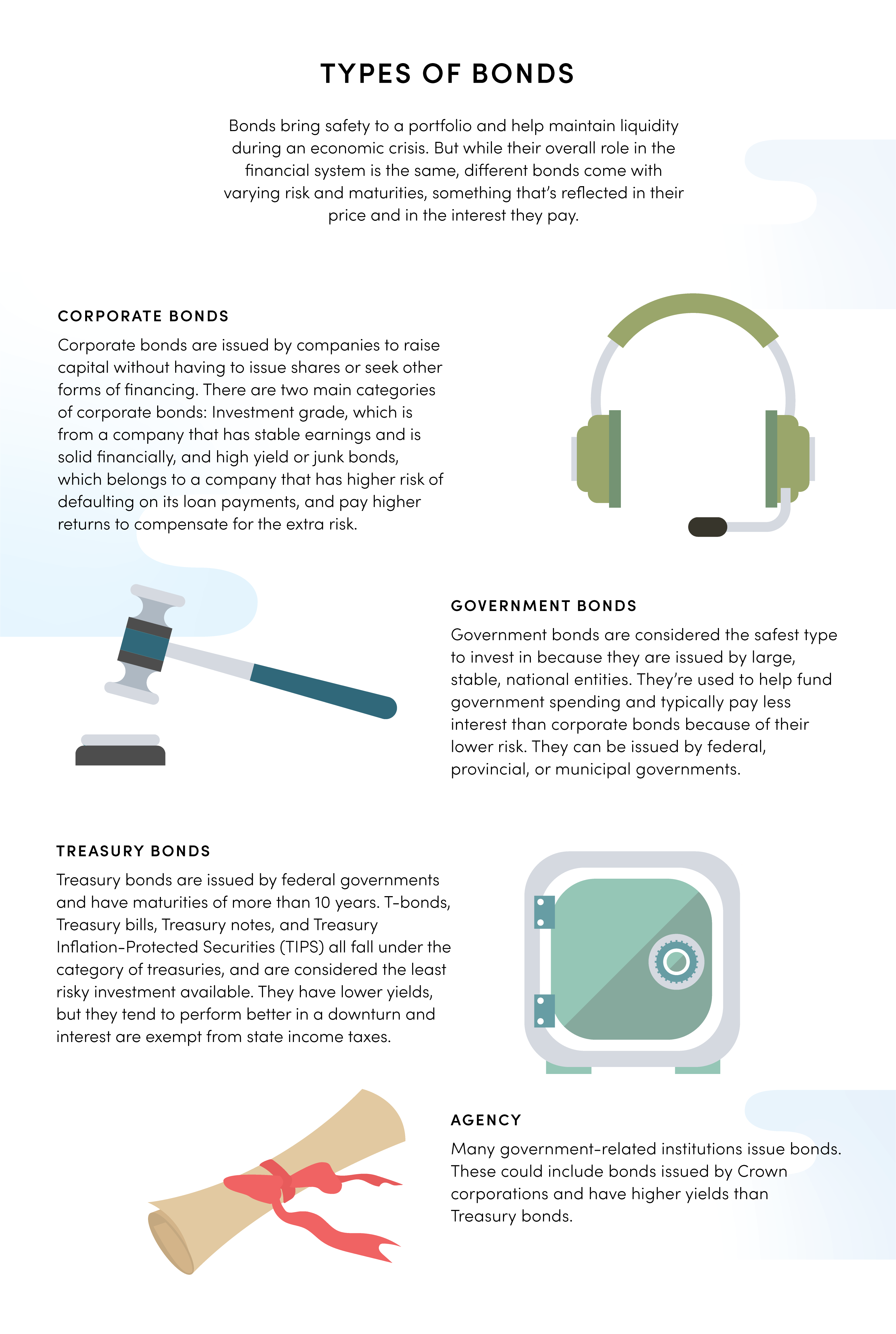Bonds bring safety to a portfolio and help maintain liquidity during an economic crisis. But while their overall role in the financial system is the same, different bonds come with varying risk and maturities, something that’s reflected in their price and in the interest they pay.

Corporate Bonds
Corporate bonds are issued by companies to raise capital without having to issue shares or seek other forms of financing. There are two main categories of corporate bonds: Investment grade, which is from a company that has stable earnings and is solid financially, and high yield or junk bonds, which belongs to a company that has higher risk of defaulting on its loan payments, and pay higher returns to compensate for the extra risk.
Government Bonds
Government bonds are considered the safest type to invest in because they are issued by large, stable, national entities. They’re used to help fund government spending and typically pay less interest than corporate bonds because of their lower risk. They can be issued by federal, provincial, or municipal governments.
Treasury Bonds
Treasury bonds are issued by federal governments and have maturities of more than 10 years. T-bonds, Treasury bills, Treasury notes, and Treasury Inflation-Protected Securities (TIPS) all fall under the category of treasuries, and are considered the least risky investment available. They have lower yields, but they tend to perform better in a downturn and interest are exempt from state income taxes.
Agency
Many government-related institutions issue bonds. These could include bonds issued by Crown corporations and have higher yields than Treasury bonds.




